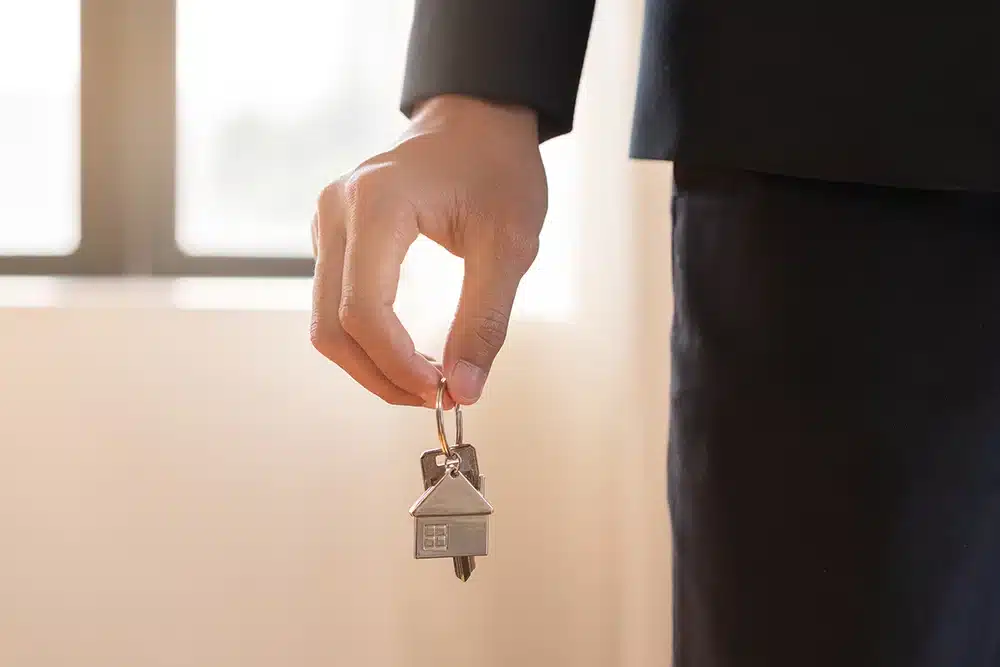11 Tips for New Landlords in the New York City Area

Good tenants—those who pay rent on time and keep rentals in good condition—are always looking for a great landlord who owns a space that meets their needs. You could be the landlord they’re searching for, regardless of your current experience in managing properties.
Becoming a successful landlord in the New York City area isn’t easy, but you can increase your chances of success. You’ll need to develop processes that help you find ideal tenants, maintain your property, and overcome other obstacles.
These tips and best practices for first-time landlords in the greater New York City area will help you develop your own processes and navigate initial challenges.
1. Tailor Listings to Your Ideal Tenant
You don’t need to spend a lot of money on staged photos and upgrades that present your rental as an updated, top-of-the-line space unless that’s what your ideal tenant is looking for.
Instead, improve the elements that matter to your ideal tenants, and highlight those elements in photos. Your goal is to help good tenants see themselves living on your property.
Some upgrades that tenants appreciate and look great in photos include:
- Painting the walls a bright, glossy white
- Cleaning the floors, carpets and cabinetry so they’re free of dust, scuffs and stains
- Upgrading old plumbing and lighting fixtures
- Adding some landscaping to the front yard or outdoor area
- Placing décor elements like flowers or plants in the kitchen and bathrooms (to help make the space look “lived in”)
2. Conduct a Rental Analysis
Don’t just look at the rents charged in nearby buildings and set your rates accordingly. Dig a little deeper and get a sense of what the rent includes and how your building, apartments and amenities compare. If the rental market is very competitive in your area and there are numerous vacancies, think about how you can differentiate your property from the competition.
3. Include Vacancies When Projecting Income
If a tenant terminates a lease unexpectedly, it might be at least one to two weeks until you can turn over the property and start searching for your next tenant. This means your rental could be vacant for one or two months each year, depending on your vacancy rate and lease terms.
To manage the loss of income due to vacancies, experts suggest having six months’ worth of mortgage payments in reserve.
4. Screen Potential Tenants
It can be tempting to cut corners on your screening process to fill a vacancy quickly, but it’s not recommended. No matter how long a vacancy lasts, renting to unqualified tenants can cost you far more than an empty unit. When vetting a potential tenant, you’ll want to collect data like their contact information, rental history, employment details, and proof of income.
Make sure your screening practices do not violate New York City’s Human Rights Law, which prohibits making leasing decisions based on a tenant’s race, religion, color, sex (including sexual orientation and gender identity), family status, national origin or disability.
5. Put Everything in Writing
Hire an attorney to help you create a lease that covers all legal bases and clearly communicates your terms to the new tenant.
You can also send a welcome letter to the tenant prior to their move-in day that lists important information that’s not legal in nature but is still helpful, such as:
- Your contact information and office hours
- Details about trash and recycling pick-up
- Information about setting up utilities (if applicable)
- Instructions for how to make rental payments
- A brief neighborhood guide with a list of grocery stores and public transportation stops
6. Build a Network of Reliable Experts
Establish relationships with local experts you can trust and who can be available to help when you need them. Here’s a list of professions to start with:
- A handyman or maintenance contractor
- Accountant
- Property inspector
- Landlord insurance agent
- Attorney
- Appraiser
- Real estate agent
7. Respond to Maintenance Requests Promptly & Communicate Clearly
While you can’t control the maintenance problems that may arise during your tenant’s lease, you can control how you respond to them.
If you receive a maintenance request that can’t be resolved immediately, reply quickly to the tenant and let them know that you’re working on a solution and when they can expect to hear from you again. Your tenants will appreciate it, and you’ll differentiate yourself and your property from competitors.
8. Plan Ahead for Seasonal Maintenance
You can help prevent expensive property issues and service delays by scheduling seasonal and annual maintenance in advance.
In October or November, start planning how you will fulfill your snow removal responsibilities over the winter. Annual HVAC filter changes and tune-ups, water heater sediment flushes, and sprinkler system inspections are routine maintenance needs you can schedule now with a quick phone call.
See our property maintenance guide for a thorough list of maintenance tasks NYC-area landlords need to complete each year.
9. Set Aside Funds for Property Improvements
Good tenants are more inclined to renew their lease if you make quality-of-life upgrades to your property over their tenancy. These upgrades don’t have to be major. A new kitchen sink faucet, for example, is an excellent, low-cost upgrade. You can also ask your tenant for input to get a better idea of what’s needed.
Even if your tenant doesn’t renew, improving your property will help keep it up-to-date and well-maintained.
10. Know Your Legal Responsibilities
Being a landlord can be tough, especially for those who are new to the role. The transition can be especially challenging for those in New York City. Not only is the city “tenant friendly,” but it’s also highly regulated. Everything from how you manage security deposits to when window guards must be installed is mandated by state and city law. To start, you’ll want to familiarize yourself with the owners’ version of the ABCs of Housing, a guide to housing rules and regulations published by the New York City Department of Housing Preservation & Development (HPD).
11. Get the Right Landlord Insurance
Insure your rental property for its full replacement value so you’ll be covered after a disaster. Basic landlord insurance policies don’t always provide this minimum coverage, especially New York properties with special insurance needs like historic brownstones or mixed-use properties.
Ask your insurance partner to analyze your policy and ensure you’re ready to weather disasters and challenges. Your broker or agent might recommend one or more of the following useful add-ons:
- Ordinance or Law coverage (essential for landlords with older properties)
- Flood insurance
- Sewer backup coverage
- Loss of rent
- Service line coverage
- Personal property (i.e., items you store in a closet or office, etc.)
- Umbrella policy
- Earthquake insurance
- Commercial auto insurance (useful if you use your vehicle for business)
- Tenant discrimination insurance (covers legal expenses if you get accused of discrimination)
If you have any questions about landlord insurance, or if you would like a free, no-obligation insurance review, call us at 877-576-5200.

